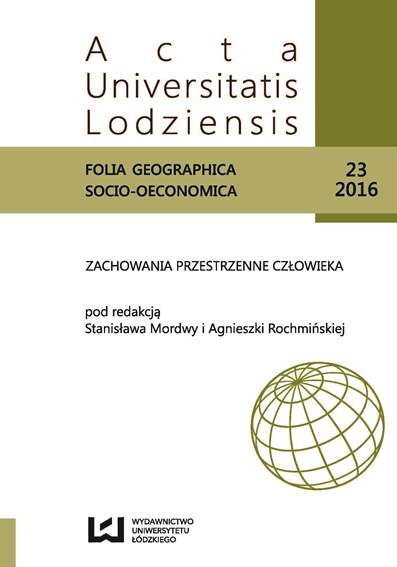Zachowania przestrzenne klientów centrów handlowych - przykład Łodzi
Spatial behaviours of shopping centre customers - the example of Łódź
Author(s): Agnieszka RochmińskaSubject(s): Social Sciences, Economy, Geography, Regional studies, Human Geography
Published by: Wydawnictwo Uniwersytetu Łódzkiego
Keywords: spatial behaviour; shopping centre; Łódź
Summary/Abstract: Political and economic transformations in Poland in the 1990s influenced the functioning of trade in Poland, also in Łódź. The Polish market saw new types of retail outlets, including shopping centres, and, therefore, influenced the changes in the development of cities or their parts as well as the behaviours of the residents and other subjects. In relation to those changes that have yet to be complete this article presents the development and the characterization of shopping centres with FMCG products (Fast moving consumer foods) in Łódź. However, the main purpose of the work was to ponder the multi-aspect nature of “spatial behaviours” often applied solely to the behaviours of people (customers) and present elements associated with these behaviours. Spatial behaviours connected with new retail outlets such as shopping centres, initially of the 1st and 2nd generation and later of the 3rd and 4th generation appearing in Łódź in the 1990s were and still are subject to change. On the one hand, it is connected to the transformation of space occurring as a result of building these modern complexes and their influence on their surroundings, as even the smallest complexes are large enough to form the areas of influence and shape the city space and even areas outside the city. Shopping centres have transformed many cityscapes, influencing, among others, the changes in land development, the structure of business entities (specialized retail outlets – Praktiker, Castorama, Obi – were created in their neighbourhoods), infrastructural investments, the reorganization of traffic. However, it should be remembered that the range, force and nature of a shopping centre’s influence on its surroundings depends on its following features: the location, accessibility, working hours, size, the type and form of offered services. On the other hand, the location and attractiveness influence the spatial behaviours of decision-makers associated with the shopping centres, city residents, the owners of business entities, providers/customers and also, above all, the population which constitutes the potential clients. Shopping centres, with their wide variety of offers, have been attracting customers, and, therefore, changing migratory directions, shopping habits, the ways of spending free time. They have created a fashion for visiting these “temples of consumption” and, by extension, influenced the life of local people.
Journal: Acta Universitatis Lodziensis. Folia Geographica Socio-Oeconomica
- Issue Year: 23/2016
- Issue No: 1
- Page Range: 5-23
- Page Count: 19
- Language: Polish

